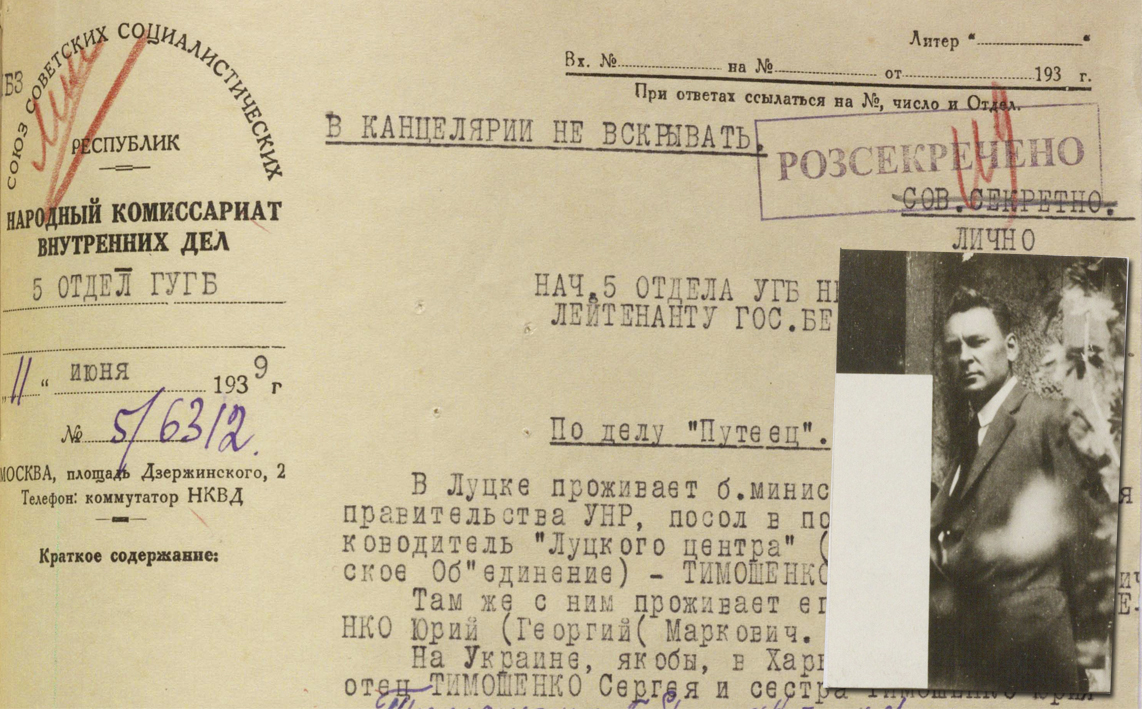“Putieiets”: Serhii Tymoshenko’s Illegal Raid on Kharkiv
6/18/2025

In the 1930s, soviet secret services became interested in Serhii Tymoshenko, a former Minister of Railways of the Ukrainian People’s Republic, architect, politician, and public figure. He was considered a potential organizer of the anti-soviet underground. The situation escalated after Tymoshenko’s secret visit to Kharkiv in 1932, when he arrived under an assumed name for a secret meeting. The chekists later extracted testimony about this event during interrogations, although the authenticity of some details is questionable.
Prior to that, Tymoshenko lived in Lutsk, was an architect, politician, and Senator of the Polish Sejm. However, the real reason for the nkvd’s close attention was his participation in the underground Intelligence Center that was subordinated to the special service of the Ministry of Military Affairs of the State Center of the UPR in exile. The archives of the Foreign Intelligence Service of Ukraine contain only fragments of his biography, but they testify to his active political and engineering activities.
Back in the UPR era, Tymoshenko was one of the key figures in the Ukrainian State: he headed the Ministry of Railways, was a member of the Central Rada, participated in the Second Winter Campaign, and designed dozens of buildings in the Ukrainian Art Nouveau style. Having emigrated, he taught in Czechoslovakia and later returned to Volyn, where he combined professional and underground activities.
At the outbreak of World War II, the chekists searched the captured Lutsk for Tymoshenko, but in vain. He managed to leave for abroad and later ended up living in the United States, where he passed away in 1950. One of the creators of Ukrainian architectural modernism, the author of the tombstone on Symon Petliura’s grave in Paris, he left behind more than 400 architectural projects, as well as the undisclosed history of the struggle for Ukraine’s independence, in which architecture and intelligence went hand in hand.
